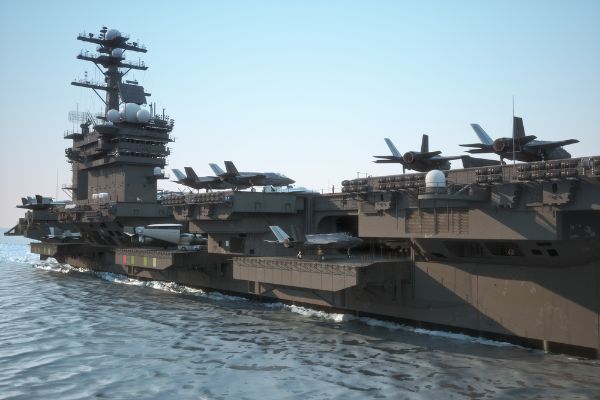
According to the Pentagon’s 2022 China Military Power Report, which was published in November, China’s People’s Liberation Army Navy (PLAN) has overtaken the U.S. Navy in fleet size and currently has about 340 warships. Furthermore, 400 ships are anticipated to be added to China’s navy by 2025.
According to the U.S. Navy’s Navigation Plan 2022, which was published last summer, the U.S. fleet currently numbers fewer than 300 ships, with a Defense department target of 350 manned ships by 2045.
A blue-water navy is a naval force that can operate internationally, mostly through the open ocean’s deep seas. The ability to conduct long-range sea control is a prerequisite, even though definitions of what exactly qualifies as such a force differ. In other words, a country’s chances of controlling the world’s vital maritime lanes increase with the strength of its blue-water fleet.
What is the U.S. Navy doing in response to this harsh truth under Joe Biden?
Defeating climate change has been one of Secretary of the Navy Carlos Del Toro’s top concerns since assuming office, according to the Washington Examiner. Recently, when visiting the Bahamas to meet with Prime Minister Philip Davis, the two men had a lengthy conversation about, get this, climate change and what the US is doing to combat it. As for Del Toro:
“As the Secretary of the Navy, I can attest that I have placed climate change at the top of my priority list from the moment I assumed my position. The U.S. Navy and Marine Corps team has long worked on energy and climate security, and we are now expanding and speeding up those efforts.”
Whew! I was concerned for a moment, but I’m so happy that Del Toro has his priorities in order, just like the entire Biden administration.
How serious is Del Toro about fake climate change, though? specifically, the effects of human activity on the climate? Climate change, according to the secretary of the Navy, requires “all hands on deck.” (Ignore the hysterical laughing coming from Beijing and the Kremlin.)
Author: Blake Ambrose
These content links are provided by Content.ad. Both Content.ad and the web site upon which the links are displayed may receive compensation when readers click on these links. Some of the content you are redirected to may be sponsored content. View our privacy policy here.
To learn how you can use Content.ad to drive visitors to your content or add this service to your site, please contact us at [email protected].
Family-Friendly Content
Website owners select the type of content that appears in our units. However, if you would like to ensure that Content.ad always displays family-friendly content on this device, regardless of what site you are on, check the option below. Learn More





